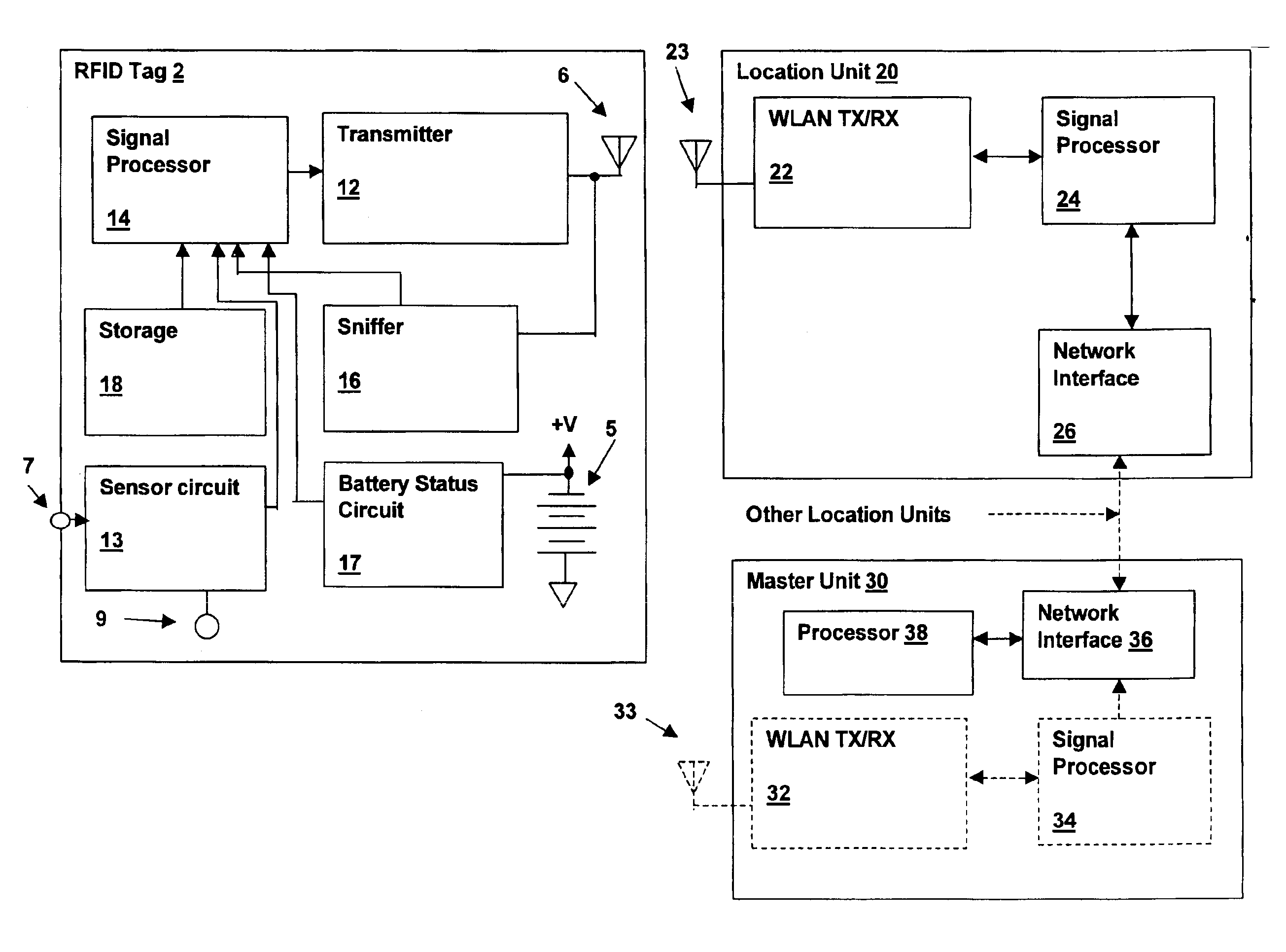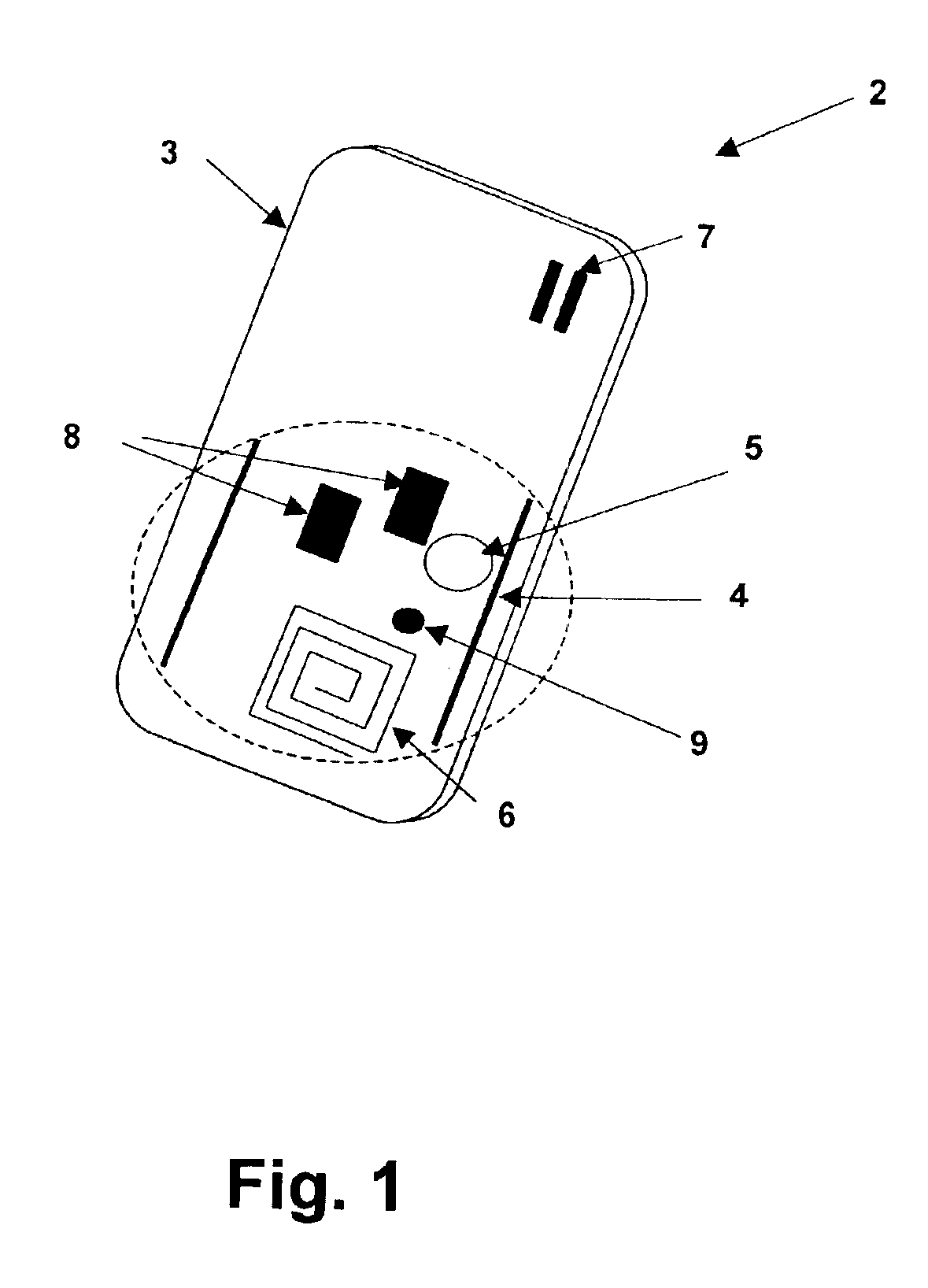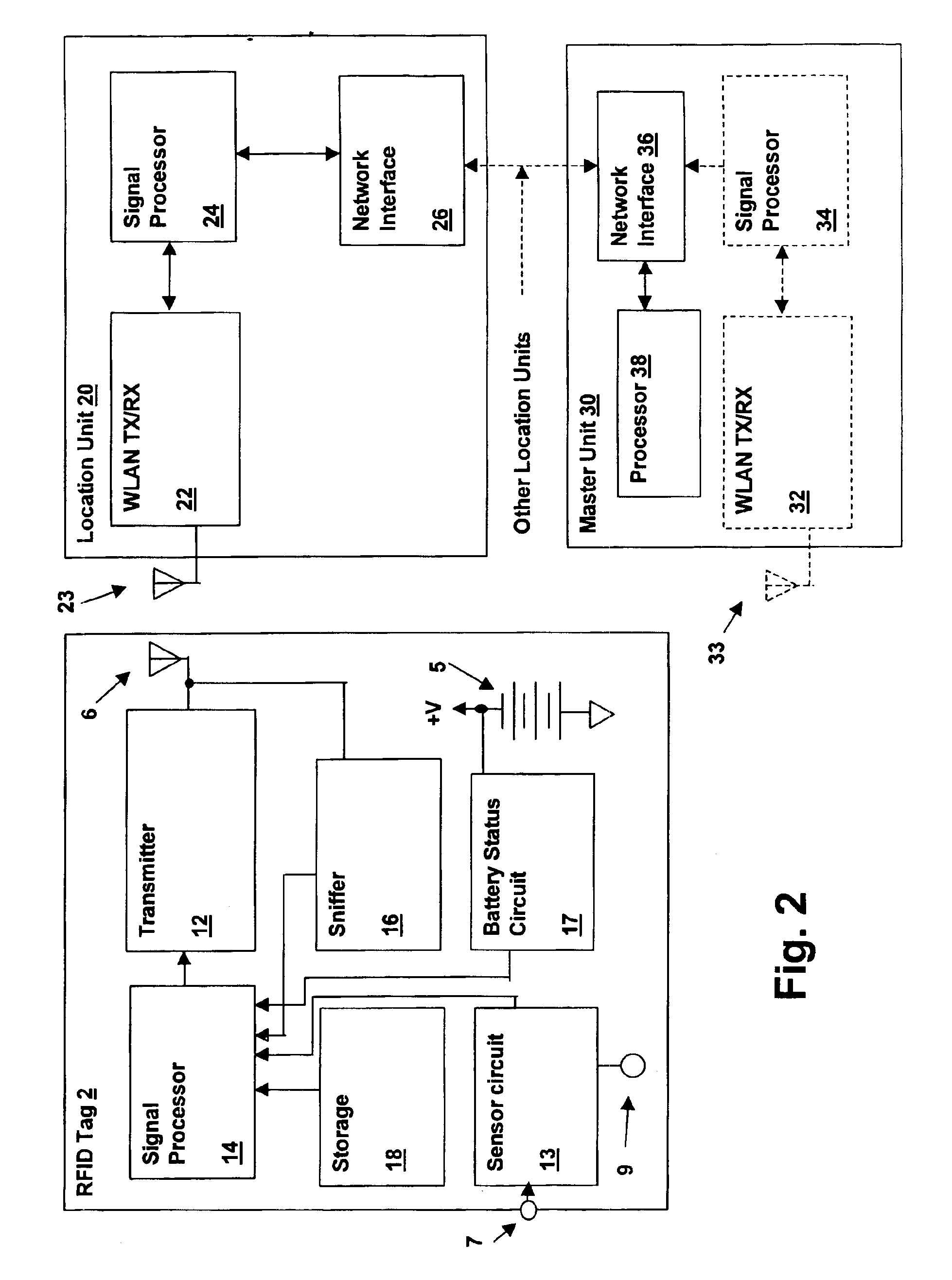Wireless local area network (WLAN) channel radio-frequency identification (RFID) tag system and method therefor
a radio-frequency identification and local area network technology, applied in the field of wireless networks, can solve the problems of inability to support mac (medium access control) support and interface for some applications, and add additional hardware to increase the cost and complexity of locating stations, so as to avoid disrupting the operation of the wlan
- Summary
- Abstract
- Description
- Claims
- Application Information
AI Technical Summary
Benefits of technology
Problems solved by technology
Method used
Image
Examples
Embodiment Construction
[0014]Referring to the figures, and in particular to FIG. 1, a radio-frequency identification (RFID) tag 2, is depicted in accordance with an embodiment of the present invention. Tag 2 includes a printed circuit substrate 4 on which electronic components 8 are interconnected via conductive patterns on substrate 4 to form the tag circuits. The circuits generally comprise a transmitter for transmitting a signal on a wireless local area network (WLAN) channel, for reception by location units coupled to a WLAN. A battery 5 supplies power to the electronic circuit. An antenna 6 is coupled to the transmitter for launching the transmitted WLAN channel signal for reception by location units. Substrate 4 and electronic components 8 are covered with a housing 3, which may include surface decoration forming an identification badge, apertures through the housing for attachment to key rings or cords for using tag as a pendant, etc. A sensor 9 may be included within housing for measuring characte...
PUM
 Login to View More
Login to View More Abstract
Description
Claims
Application Information
 Login to View More
Login to View More - R&D
- Intellectual Property
- Life Sciences
- Materials
- Tech Scout
- Unparalleled Data Quality
- Higher Quality Content
- 60% Fewer Hallucinations
Browse by: Latest US Patents, China's latest patents, Technical Efficacy Thesaurus, Application Domain, Technology Topic, Popular Technical Reports.
© 2025 PatSnap. All rights reserved.Legal|Privacy policy|Modern Slavery Act Transparency Statement|Sitemap|About US| Contact US: help@patsnap.com



